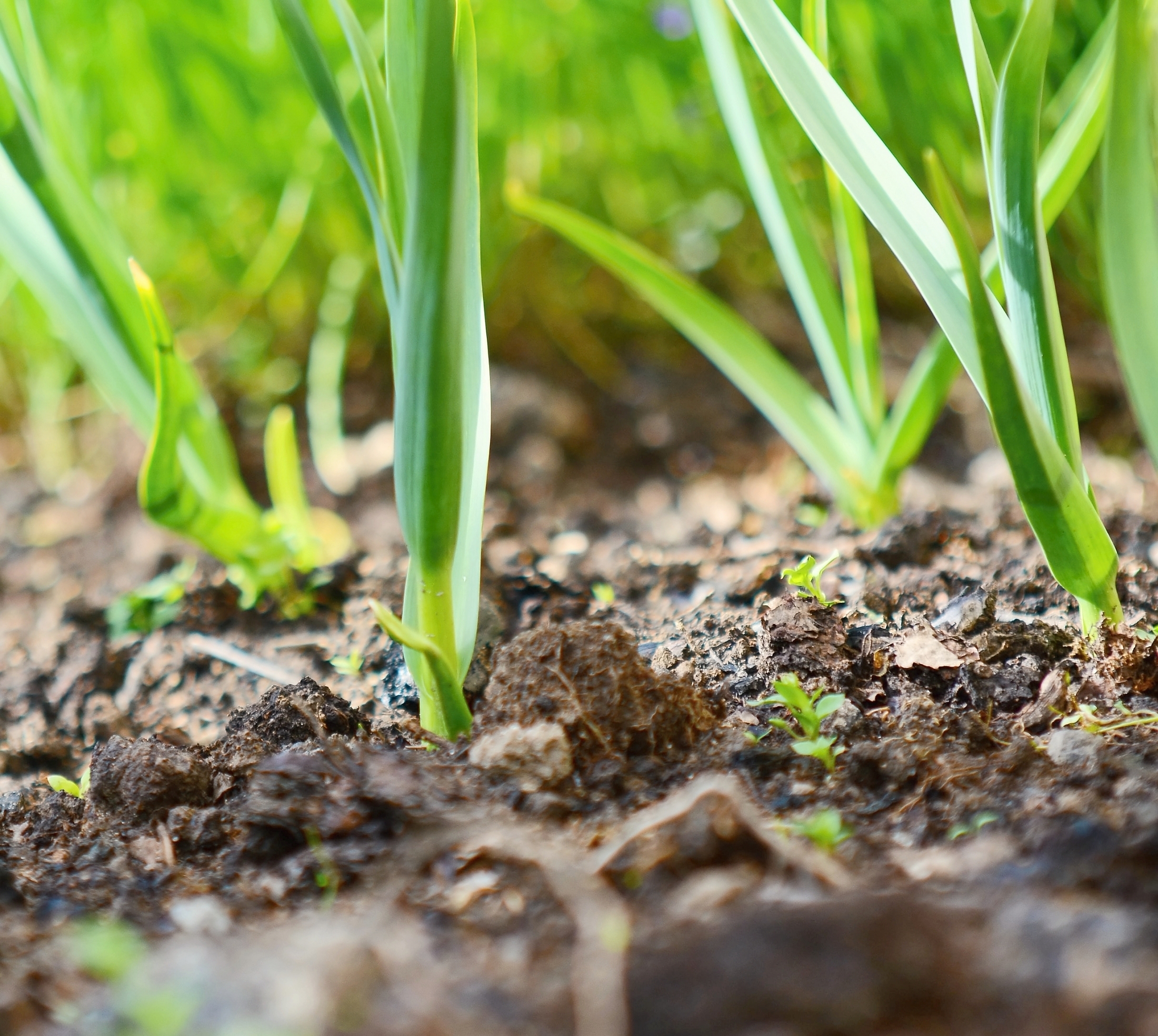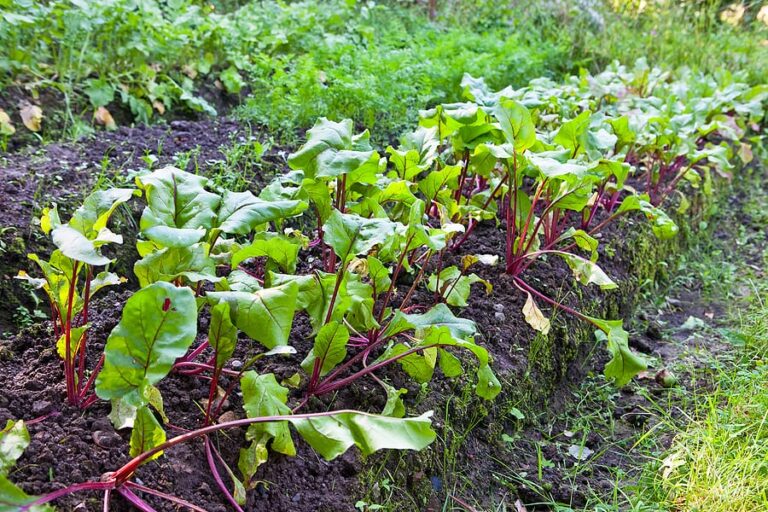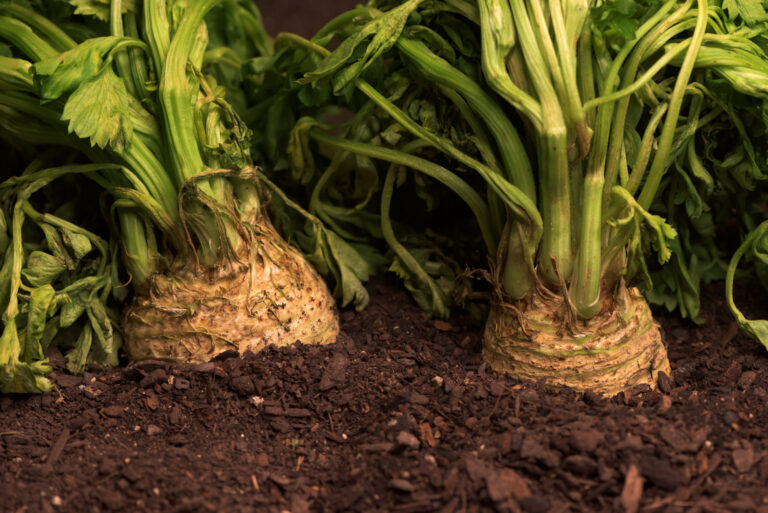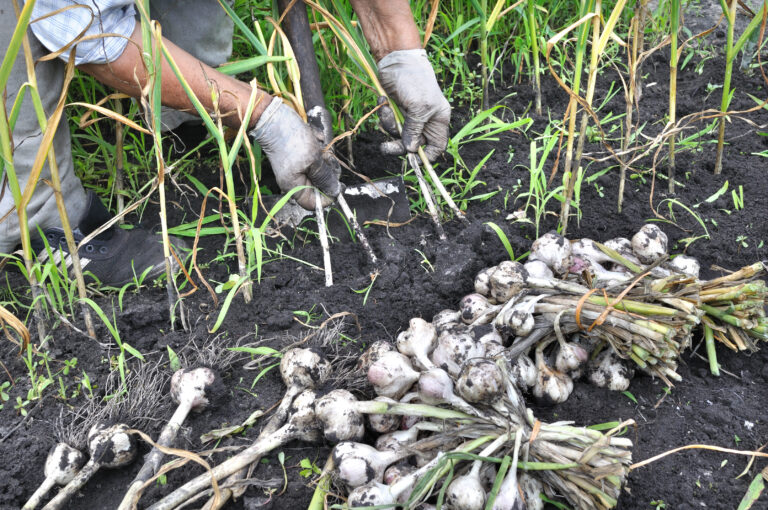Fertilizing Garlic: Feeding Tips for Bigger, Healthier Bulbs
Proper fertilization is key to growing large, flavorful garlic bulbs. After more than 30 years gardening garlic in California’s Central Valley and Sonoma Valley, I’ve found that feeding at the right times and with the right nutrients makes a noticeable difference in bulb size and quality.
Understanding Garlic Nutrition
Garlic is a heavy feeder that thrives in nutrient-rich soil. Key nutrients:
- Nitrogen (N): Supports leafy growth early in the season.
- Phosphorus (P): Promotes strong root development.
- Potassium (K): Strengthens bulbs and improves disease resistance.
- Micronutrients: Calcium, magnesium, and sulfur support overall plant health and flavor.
🌱 Gardener’s tip: I always test my soil first to avoid over-fertilizing and adjust nutrients based on results.
When to Fertilize Garlic
- At Planting: Incorporate compost or well-rotted manure into the soil for slow-release nutrients.
- Early Growth (Late Fall to Early Spring): Side-dress with a nitrogen-rich organic fertilizer to boost leafy growth.
- Bulb Formation (Spring): Apply a balanced fertilizer (N-P-K 5-10-10) to support large bulb development.
- Avoid Fertilizing Late: Stop feeding 3–4 weeks before harvest to prevent excess moisture in bulbs.
How to Fertilize
- Side-Dressing: Sprinkle fertilizer or compost along rows, avoiding direct contact with cloves.
- Liquid Fertilizers: Use fish emulsion or seaweed extract for a quick nutrient boost.
- Organic Options: Well-composted manure, bone meal, or kelp meal work well for slow-release nutrition.
🌱 Tip: Light, frequent applications are better than one heavy dose. Over-fertilizing can encourage leaf growth at the expense of bulbs.
My Gardener’s Note
In my Sonoma Valley garden, I side-dress with compost in fall, use fish emulsion in early spring, and apply a balanced organic fertilizer in mid-spring. This routine consistently produces bulbs 30–50% larger than unfed garlic.
🌱 Bottom line: Fertilize garlic strategically throughout the season—at planting, early growth, and during bulb formation—to maximize yield and flavor.
Garlic Feeding Chart: When and What to Apply
| Growth Stage | Timing | Recommended Fertilizer / Amendment | Purpose / Notes |
|---|---|---|---|
| At Planting | Fall (4–6 weeks before first frost) | Well-rotted compost or manure | Provides slow-release nutrients for root establishment |
| Early Growth / Leaf Development | Late fall to early spring | Nitrogen-rich fertilizer (e.g., blood meal, fish emulsion) | Encourages strong, healthy leaves for photosynthesis |
| Bulb Formation | Spring (before scapes appear) | Balanced fertilizer (e.g., N-P-K 5-10-10, kelp meal) | Supports bulb enlargement and overall plant health |
| Mid-Season / Maintenance | Throughout spring, optional | Liquid seaweed or fish emulsion weekly | Boosts micronutrients, improves resilience, and flavor |
| Pre-Harvest | 2–3 weeks before harvest | Stop fertilizing | Allows bulbs to mature and dry; prevents excess moisture |
Quick Tips:
- Avoid Over-Fertilizing: Too much nitrogen late in the season leads to lush leaves but small bulbs.
- Side-Dressing: Apply fertilizer along the row, 2–3 inches away from cloves to prevent burn.
- Organic Options: Bone meal, kelp meal, and composted manure are excellent slow-release choices.
- Watering: Always water after fertilizing to help nutrients penetrate soil.
🌱 Gardener’s note: In my Sonoma Valley garden, I follow this feeding schedule every fall and spring. My bulbs consistently reach 3–4 inches in diameter and taste robust.
Garlic Growing Hub
Start here: The Ultimate Garlic Growing Guide: From Seed to Harvest
🌱 Garlic Planting & Timing Clusters
- Garlic Plant Starting Tips: How to Get Going
- When to Plant Garlic: Fall vs. Spring Compared
- Garlic Planting Calendar by Zone (Month-by-Month Guide)
- Ideal Soil Temperature for Planting Garlic and Why It Matters
- Climate Guide: Growing Garlic in Warm vs. Cold Regions
🧄 Garlic Types & Varieties Clusters
- Softneck vs. Hardneck Garlic: Key Differences for Gardeners
- Best Softneck Garlic Varieties for Home Gardens
- Best Hardneck Garlic Varieties for Flavor and Storage
- Rocambole Garlic: What It Is and How to Grow It
- Elephant Garlic: Tips for Planting and Harvesting Giant Bulbs
🌿 Growing & Care Clusters
- Proper Garlic Spacing for Bigger Bulbs
- How to Water Garlic the Right Way
- Fertilizing Garlic: Feeding Tips Bigger, Healthier Bulbs
- Essential Garlic Care: From Planting to Harvest
- Best Companion Plants for Garlic (And What to Avoid)
- How to Grow Garlic in Containers: Step-by-Step Guide
🐛 Pests & Disease Clusters
🌾 Harvest & Storage Clusters
- How to Tell When Garlic Is Ready to Harvest
- How to Harvest and Store Garlic
- How to Cure Garlic for Long-Term Storage
- Best Ways to Store and Preserve Garlic at Home
🍳 Kitchen & Use Clusters
- Garlic Cooking and Severing Ideas for Your Harvest Table
- Fresh Garlic vs. Stored Garlic: Flavor and Cooking Differences
- Garlic Scapes: What They Are and How to Use Them
- Leeks vs. Green Onions vs. Garlic: What’s the Difference







